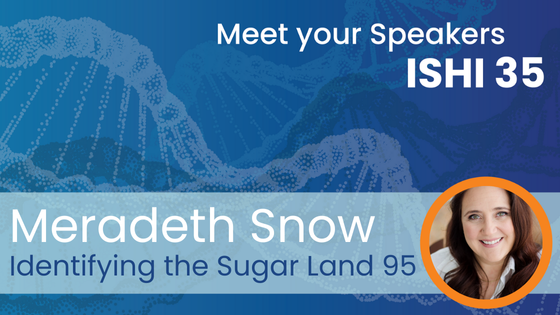After the passage of the 13th Amendment in the United States outlawing slavery, many African American individuals were “convicted” of trumped-up charges and forced into convict leasing camps. Individuals suffering in these scenarios were viewed as entirely replaceable. As demonstrated by the individuals excavated in the Sugar Land 95 project, the first convict leasing labor cemetery to be excavated in the United States, they were shot, beaten, starved, and forced to complete heavy labor, even in the grueling Texas summer heat and cold and wet winters. The excavation of these individuals demonstrates just one of the many labor camps individuals were imprisoned at, and when deaths inevitably occurred, the individuals were stripped of any identification and interred in makeshift graves. This cruel practice post-slavery occurred around the country and is often overlooked in United States history, but efforts are being made to identify the Sugar Land 95 individuals.
In order to restore the names of the individuals who died between 1875 and 1911, excavation and extensive osteological analyses on the remains was undertaken, coupled with ongoing historical research. Genetic genealogical work is currently overseen by Principal Research Group, a 501c3 non-profit. After approval and discussion with the known descendants and families, and a permit from the Texas Historical Commission, identification of several Sugar Land 95 individuals is underway. The collection of genetic data for identification is taking place in the Snow Molecular Anthropology Laboratory in Missoula, Montana. Results obtained thus far have already allowed families to connect and to better understand what happened at the labor camp, and about the strength their ancestors had to endure the horrific conditions. In Meradeth’s presentation at ISHI, attendees will better understand this troubling historical era and the ongoing work to identify the individuals. From working with challenging DNA samples, to community engagement, the ongoing challenges and solutions of a genetic genealogy project will be discussed. As these sorts of cemeteries for victims of state-led violence are found around the world due to political regimes fraught with abuses and physical violence, the Sugar Land 95 project seeks to lead the way in using genetic genealogy to establish a community-based method of giving the individuals their names and identities back, as well as understanding and connection to their families today.

Can you give us a sneak peek into the main theme of your presentation and why it’s important for our audience?
The main theme will be ethical identification of the post-slavery individuals who suffered and died in the work camps used to force individuals to labor in the sugar cane fields, specifically the Sugar Land 95, who were buried outside of Houston, Texas. Additionally, the other theme will be the use of SNP data for this sort of work, and how identifying UHRs is made vastly easier by utilizing NGS technology.
What inspired you to explore the topic of your presentation?
This was a project that was already within the wheelhouse of my work, which is specializing in ancient and degraded DNA from either archaeological or forensic proveniences. So, when Principal Research Group came to me, seeking to see if I could help with the identification of the Sugar Land 95, it was a perfect fit with the work I’d already been doing.
What’s one common misconception about your area of expertise you’d like to clarify?
That Next Generation Sequencing and SNP data is hard to use, ethically questionable, and too expensive to be worth it. All of these aren’t true, and I hope that my work and talk can help show people that it’s worth the effort because identifying people is worth it!
How do you hope your presentation will impact the audience or industry?
As I said above, I’m hoping that I can show that this sort of work is actually something that any lab can tackle, or that it’s not out of reach to have someone work on if they don’t want to do the work in-house. Additionally, I hope that people walk away knowing a little more about the post-slavery era and what happened to African American individuals during this time.
Are there any resources or tools you recommend for those interested in learning more about your presentation topic?
a. I highly recommend looking into SOJES (Society of Justice and Equality for the People of Sugar Land), as well as Principal Research Group.
When you’re not working, what’s your favorite way to unwind or relax?
I love to read, and am an author of many published novels, which takes up a lot of my non-work time. I also enjoy making jewelry and small pottery pieces for when I really need to quiet my brain.
What’s the best piece of advice you’ve ever received?
Never think the first time you do something that you’ll be perfect at it. There may be a such a thing as “beginner’s luck” but the reality is that anything worth doing takes practice and repeated attempts.
If you could only eat one dish for the rest of your life, what would it be?
Tacos! There’s so much variation, but I just love them 😊
What were you doing in 1989, when ISHI first started?
So, I was in elementary school, in second grade. I was a voracious reader even at that time, and regularly getting into trouble for reading under my desk.
Can you share a memorable moment from ISHI that has stayed with you?
The first thing that comes to mind is that I never ever get into my car without checking the backseats thoroughly after one of the talks. But, on a more positive note, every time I get to ISHI, I love the feeling I get that I’m in a room full of people who entirely understand what I do and why I do it. That feeling buoys me up all year!

